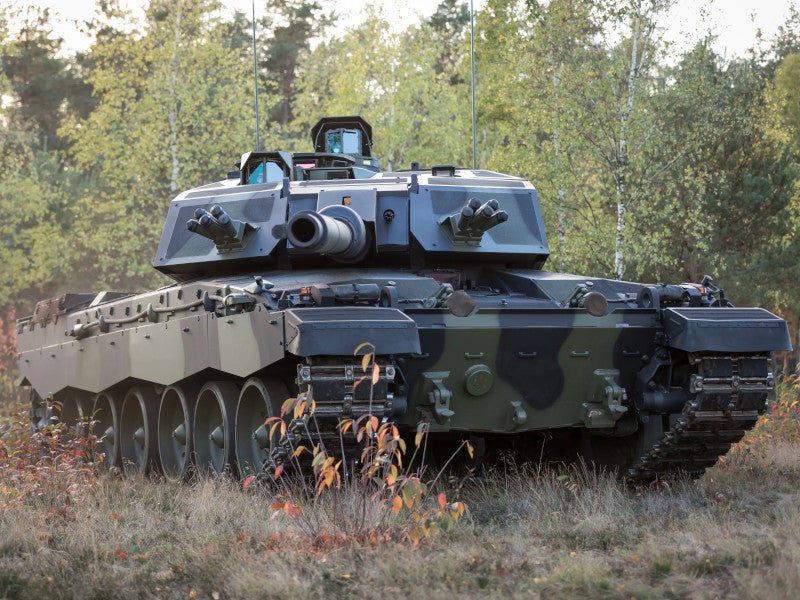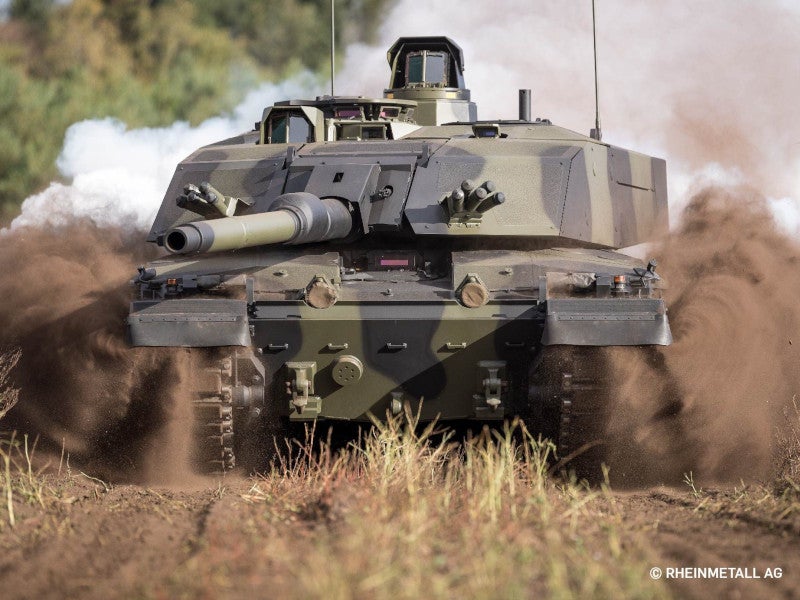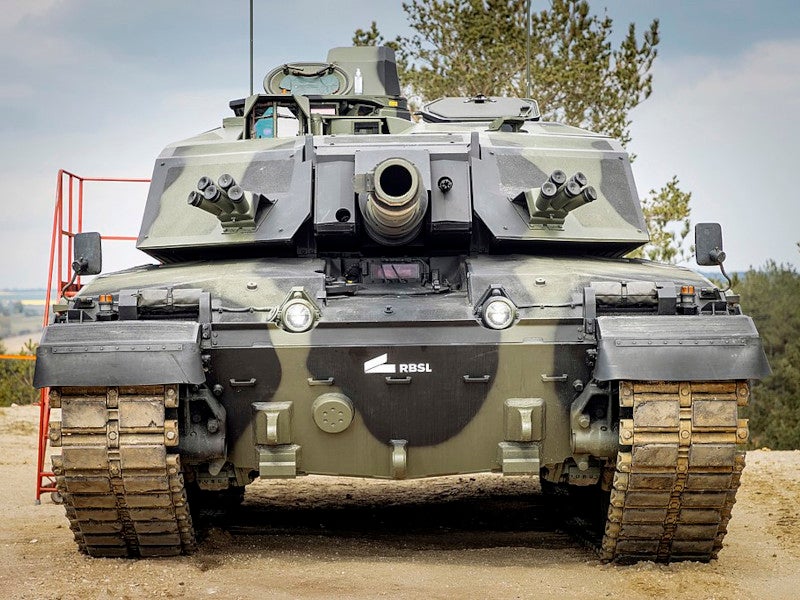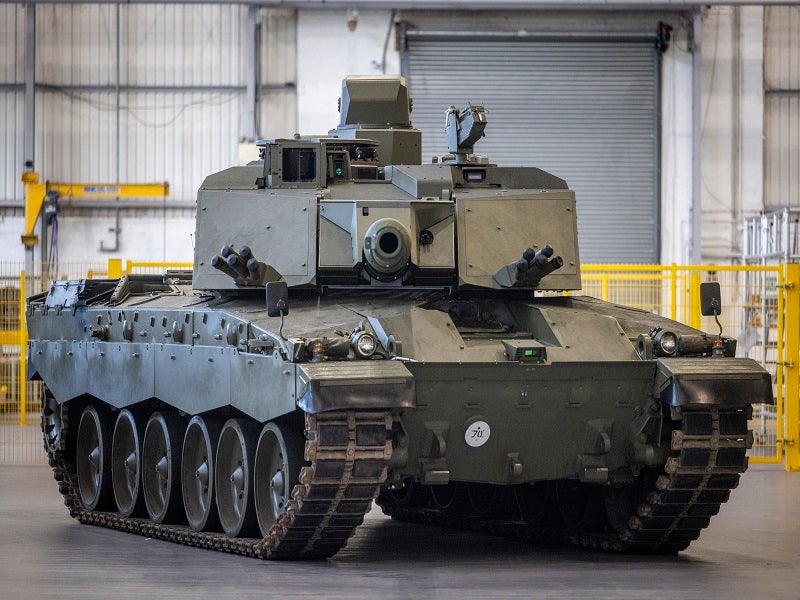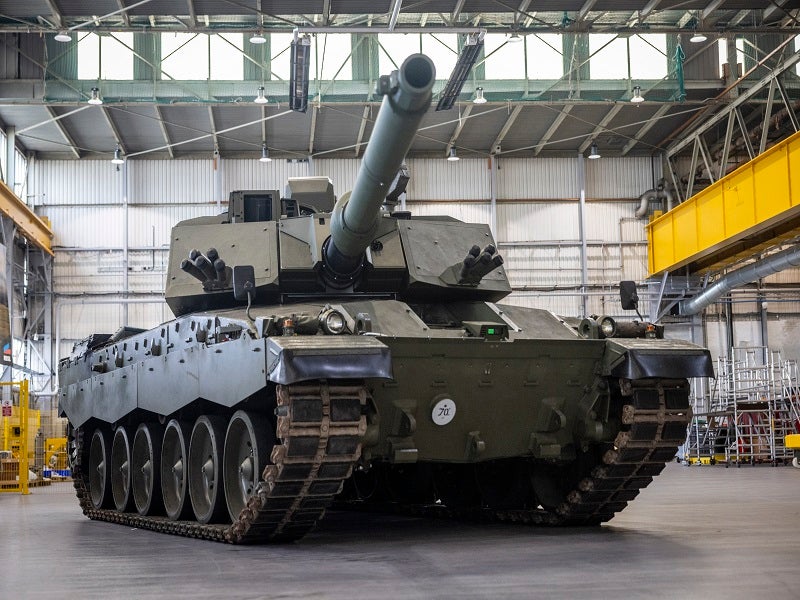Challenger 3 is a new main battle tank (MBT) being developed by Rheinmetall BAE Systems Land (RBSL), a joint venture between the UK-based BAE Systems and Germany-based Rheinmetall.
The new tank is an upgrade of the Challenger 2 MBT, which has been in service with the British Army since 1998.
Equipped with the latest digital enhancements and weaponry, the new tank will be at the forefront of the army’s ground force deterrent.
The Challenger 3 MBT will modernise the UK land forces through its lethality. The new technology incorporated within the tank will deliver immense warfighting capabilities in battlespaces filled with a range of threats.
The UK Ministry of Defence (MoD) placed an £800m ($1.11bn) contract with RBSL for the conversion of 148 Challenger 2 tanks into the Challenger 3 configuration in May 2021.
The Defence Equipment and Support and Combat Vehicles team is overseeing the delivery of the Challenger 3 (CR3) programme.
The first pre-production Challenger 3 MBT prototype moved into the trial phase in January 2024. In April 2024, the eighth prototype of the Challenger 3 MBT was unveiled.
All prototypes will undergo testing in operational conditions to validate their performance and make necessary refinements.
Initial operating capability is expected in 2027 while full operating capability is scheduled in 2030. The Challenger 3 MBT will remain in service with the British Army until at least 2040.
Challenger 3 MBT’s design and features
The Challenger 3 MBT features a generic vehicle architecture and new digital crew stations.
It has a gross vehicle weight of 66 tonnes (t), which is 1t more than its predecessor. The tank is manned by a crew of four, including a commander, a gunner, a loader and a driver.
The fully digitised tank can achieve interoperability with other combat vehicles in combined arms battalions while enabling multidomain integration for data sharing across domains.
Designed to handle multidomain warfare, the tank retains its ability to operate in coastal environments to support the future commander force of the Royal Marines.
The all-weather, protected tank will feature direct fire and antiarmour manoeuvre capabilities.
Observation and targeting systems
The main battle tank is fitted with improved long-range commander and gunner primary sights with automatic target tracking, wide-area search and detection (WASAD) capability and day and thermal modes for operations during day and night.
The electronic and electrical architectures of the MBT further supports future upgrades, providing significant growth potential over the coming decades.
RBSL placed a £90m subcontract with Thales Group, an aerospace and defence services provider based in France, for panoramic and fixed azimuth weapon aiming sights for both the commander and gunner of the Challenger 3 tank.
Thales agreed to supply a signal processing system, which will provide state-of-the-art video tracking and WASAD capabilities to the tank.
Armament
Challenger 3 is installed with Rheinmetall’s latest generation L55A1 120mm smoothbore gun. The high-pressure cannon can fire temperature-independent kinetic energy rounds and new-generation programmable multipurpose ammunition, including high-velocity ammunition such as high-explosive projectiles.
The latest gun and fire control technology further optimises the tank’s firepower.
The Rheinmetall 120mm smoothbore is considered to be a key upgrade to Challenger 3 as it increases accuracy, penetrating power and lethality while placing the tank at the forefront of other tanks deployed by Nato member states.
In September 2023, RBSL successfully conducted the 120mm smoothbore gun test firings. The British Challenger 3 tested the 120mm L55A1 weapon system in its L55A1CR3 configuration for the first time in April 2023.
Challenger 3 self-protection
The new turret structure and armour of the tank are expected to offer superior protection to the crew.
Challenger 3 is also equipped with a laser warning system, an active protection system and layered protection that allows it to identify incoming threats and neutralise them.
The tank underwent a comprehensive electromagnetic testing campaign to ensure its survivability in the most demanding battlefields, which are saturated with sensors.
The turret subsystems are manufactured by Pearson Engineering, a defence manufacturing services provider based in the UK.
The work is performed as part of a £25m supplier contract signed by RBSL and Pearson.
Engine and mobility
Challenger 3 is equipped with an upgraded and more powerful engine and an improved engine cooling system.
It features a third-generation hydrogas suspension system, which increases its firing accuracy on the move.
The new battle tank can attain a maximum speed of 60km/h.
Contractors and suppliers involved
Rafael Advanced Defense Systems, a defence technology company, was selected to supply its combat-proven Trophy active protection system for integration with the Challenger 3 MBT in June 2021.
Rheinmetall Electronics UK, an electronic solutions provider, is the supplier of the driver vision system for Challenger 3 while Curtiss-Wright, a commercial off-the-shelf modules supplier, is supplying turret drive stabilisation technology.
Jankel, a protection systems supplier, was awarded a £2m contract to deliver 148 vehicle crew seating sets while Atec Engineering Solutions secured an £8m subcontract to deliver power distribution boxes.
G&H, an industrial machinery manufacturing company, is supplying an embedded image periscope for the MBT under a £4.1m contract while rugged electronics provider MilDef is supplying generic vehicle architecture-compliant processors and Ethernet switches under a £2.5m contract.
Olsen Actuators, an actuator and motion control specialist, is providing customised actuator assemblies for integration onto the tank under a contract awarded in February 2023.
Oxley Group, an advanced solutions provider for the defence sector, received a £1.39m contract to supply LED lighting in September 2023.
Quantic Thistle, an electronics manufacturer, secured a £6m subcontract in September 2023 to provide encoders for the turret displacement unit.
TT Electronics, a custom power solutions provider, secured a contract to design, manufacture, and integrate electric cable harness assemblies for the Challenger 3 MBT in January 2024.

